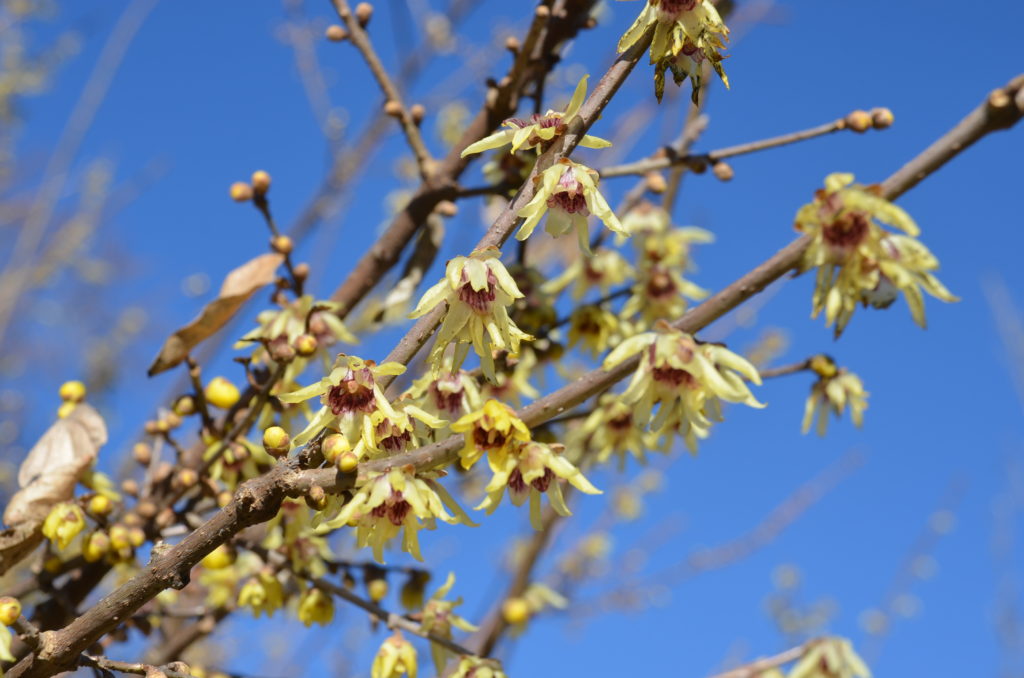Wintersweet (Chimonanthus praecox) is a landscape shrub offers four seasons of landscape interest. Also called Japanese allspice, this deciduous mid-sized shrub typically grows 10-15 feet tall and 8-12 feet wide and blooms during winter (USDA zones 7-9). You can also risk planting wintersweet in a protected courtyard garden in Zones 6 to minimize freeze injury to flowers.

Wintersweet, native to China, deserves to be planted more in the U.S. Fragrant yellow flowers (1 to 1.5 inches across) are a prelude to spring forsythia. Bloom period is mostly determined by the precise weather conditions at the time. For example, in mountainous areas of Tennessee, NC, and VA, normal bloom time is mid- February. Bare branches may pop into bloom during an unseasonal 4-5 day warm spell in late December or January.
Each flower has numerous showy tepals which range from sulfur yellow to pale yellow along with a purplish-brown center. The spicy scented blooms catch your breath. Flowers on the cultivar ‘Lutea’ display a deeper yellow color.
Rough, glossy green, opposite, elliptic-ovate to ovate-lanceolate leaves (up to 6 inches long) emerge in spring. Leaves turn yellow in fall. Branches produce spicy yellow flowers with purple-brown centers on branches clad with a few persisting leaves.
Seed pods are 2 inches in length and gradually ripen to pink. In fall, the foliage turns bright yellow. Some flowers may open prematurely and get nipped by winter’s onset. No serious disease and insect problems trouble winter sweet shrubs.
Prune wintersweet in early spring before leaves unfold. Most of the cuts are renewal types, e.g., to remove older wood to reduce height and spread. Snip off dead or broken branches at any time. Add 1-2 handfuls of a granular fertilizer such as 10-10-10 or equivalent.

 Posted in
Posted in 
